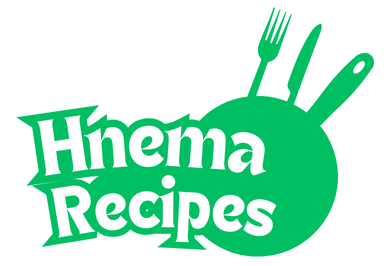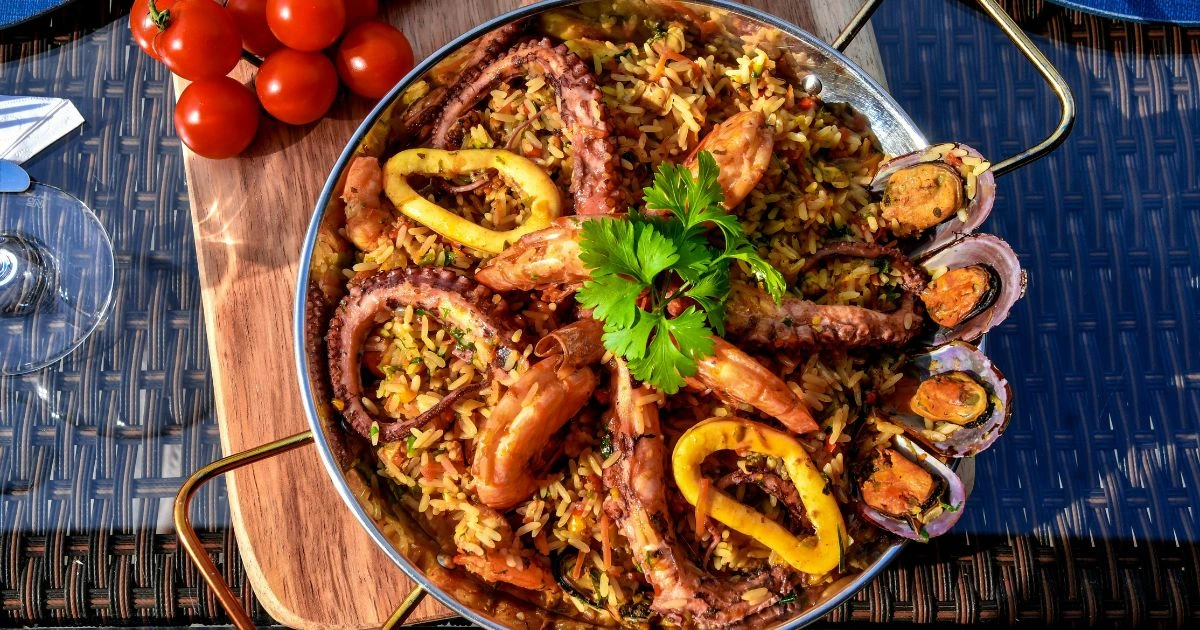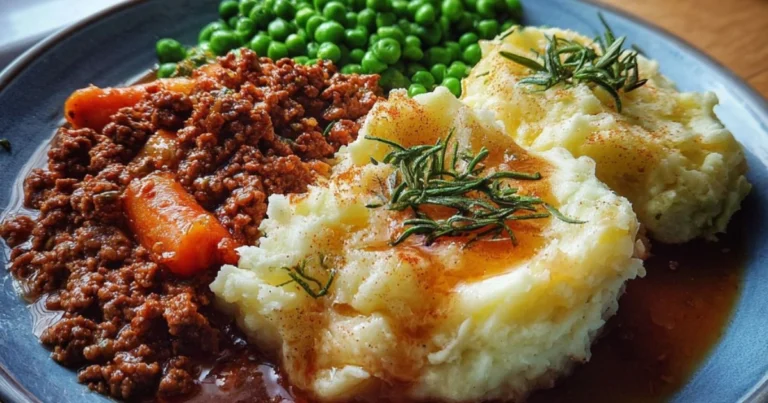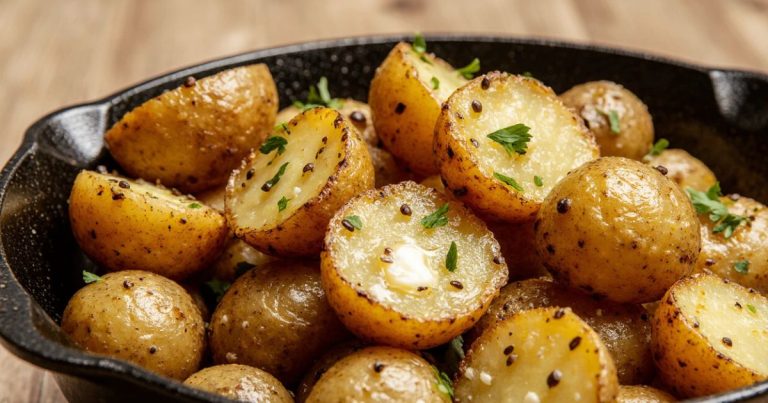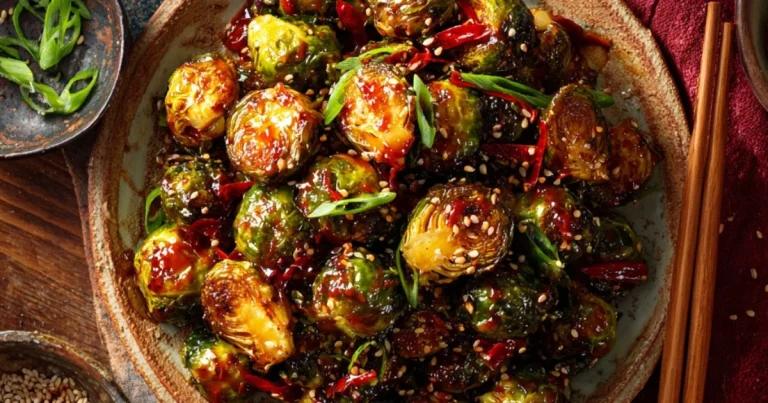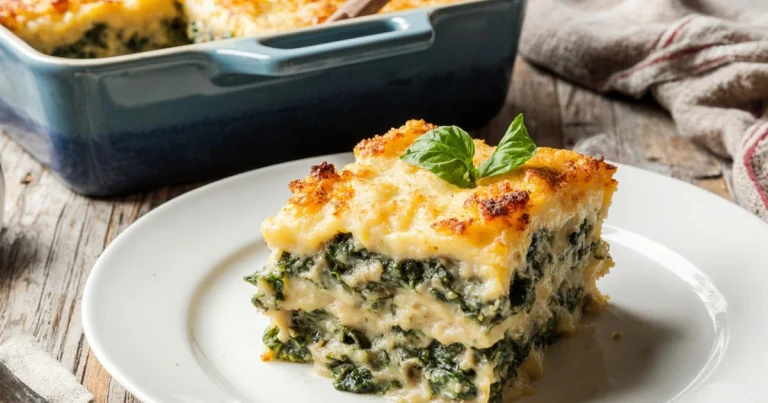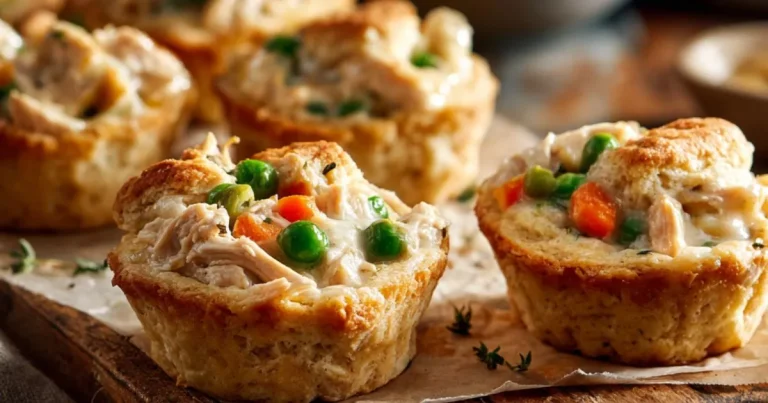Delicious Paella
Few dishes capture the heart of a culture like paella captures Spain’s. Born in the sun-drenched fields of Valencia, paella is more than just a rice dish—it’s a celebration of family, tradition, and bold Mediterranean flavors. Whether you’re serving it at a special gathering or making a simplified weeknight version, the appeal of delicious paella lies in its versatility and comforting richness.
A Taste of Spanish Heritage
Paella has humble beginnings as a rural farmer’s lunch, traditionally cooked over open flames in the fields of Eastern Spain. Classic paella Valenciana features ingredients like chicken, rabbit, green beans, and snails, paired with short-grain rice and a generous pinch of saffron. Over time, regional variations evolved—now including seafood paella, mixed paella, and vegetarian paella.
One of the essential components that define an authentic paella is saffron. This golden spice gives the dish its signature color and aroma. Learn more about its culinary use in this guide to Spanish saffron. Equally vital is the socarrat—a crispy layer of caramelized rice that forms at the bottom of the pan, offering a toasty, umami-packed bite that’s adored by purists.
As paella gained global popularity, creative chefs introduced countless adaptations. For traditional techniques and government-approved methods, explore the official paella recipe from Spain.info. And if you’re wondering what to drink with your masterpiece, check out this wine pairing guide for paella.
What Makes a Paella Delicious?
A truly delicious paella is more than just rice and seafood—it’s a balance of flavor, texture, and tradition. The foundation lies in the sofrito, a slow-cooked blend of onions, garlic, tomatoes, and pimentón (smoked paprika) that builds deep, savory notes. But the soul of the dish comes from saffron, the prized spice that gives paella its golden color and floral aroma.
The rice is equally critical. Using Bomba or Calasparra rice ensures the grains absorb flavor while staying firm. One key secret to paella’s excellence is the socarrat—the crispy, caramelized rice crust at the bottom of the pan. Achieving it without burning requires technique: cooking uncovered and resisting the urge to stir once the broth is added.
What elevates paella further is fresh, high-quality ingredients. From sweet shrimp and mussels to tender chicken or garden-fresh vegetables, every component should shine without overpowering the others. Cooking in a wide, shallow pan allows even heat distribution, enhancing both texture and aroma.
Finally, paella is best enjoyed fresh, shared at the table. That communal experience, paired with bold, rustic flavors, is what makes a well-made paella not just good—but delicious.
Types of Paella You Must Try
Paella is not just one dish—it’s a whole family of richly flavored Spanish rice meals, each reflecting local ingredients, traditions, and creativity. While they all share the same base—short-grain rice, saffron, and olive oil—the variations come from the proteins, vegetables, and regional flair added to the pan.
1. Paella Valenciana
The original and most traditional version, paella Valenciana hails from the Valencia region. It’s typically made with chicken, rabbit, green beans, garrofó (large white beans), and sometimes snails. Flavored with saffron, rosemary, and tomato, it’s cooked slowly to develop deep, rustic flavor and topped off with a golden socarrat crust.
2. Seafood Paella (Paella de Marisco)
This popular coastal variation omits meat and highlights the ocean’s bounty—shrimp, mussels, squid, and clams simmered in a rich seafood stock. It’s a favorite in beach towns and coastal restaurants, often garnished with lemon wedges and fresh herbs.
3. Mixed Paella (Paella Mixta)
A modern fusion of land and sea, this type of paella includes both chicken and seafood, often with chorizo for a smoky kick. While not traditional in Spain, it’s one of the most loved versions around the world for its bold and hearty flavors.
4. Vegetarian and Vegan Paella
Using seasonal vegetables like zucchini, artichokes, mushrooms, and bell peppers, this version is packed with color and flavor. Ingredients like preserved lemon or sundried tomatoes can add brightness and depth without the use of meat or fish.
5. Modern Variations
Creative spins like Fideuà (a noodle-based paella from Catalonia) or Arroz con Cosas (“rice with things”) showcase how flexible and globally adaptable paella has become, while still honoring its Spanish roots.
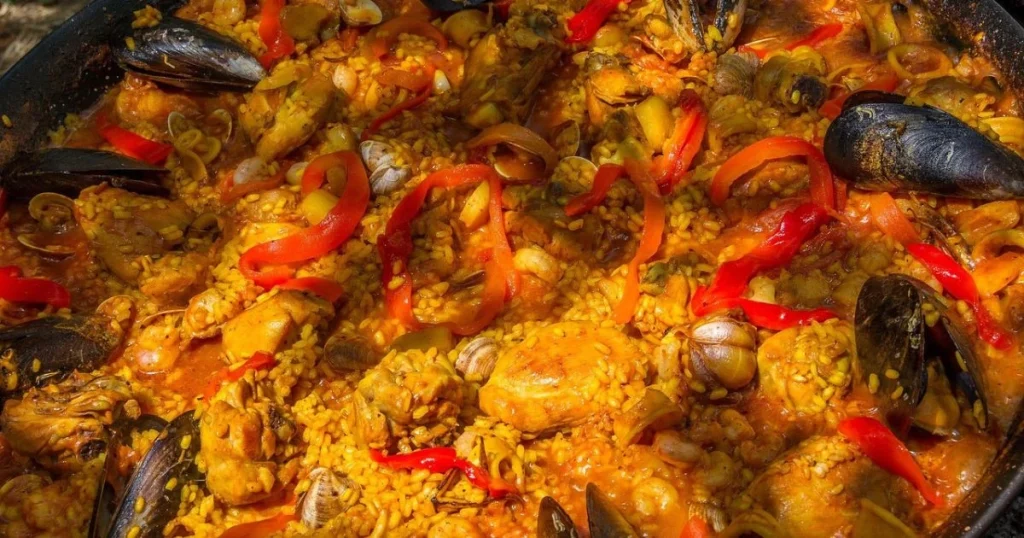
Tools You’ll Need
The right equipment makes a difference:
- Paella Pan (Paellera): Wide and shallow to allow rice to cook evenly
- Grill or Gas Burner: For an authentic outdoor experience
- Cast Iron Skillet: Great alternative if you don’t own a paellera
- Ladle or Spatula: To serve without breaking the socarrat
Wine Pairings for Every Style
Pair your paella with regional wines to elevate your meal:
- Seafood paella → Crisp Albariño or Verdejo
- Mixed paella → Bold Garnacha or Rioja
- Vegetarian paella → Light Rosé or Txakoli
- Paella Valenciana → Aged Tempranillo or even Cava
How to Make Delicious Paella: Step-by-Step
Crafting delicious paella at home is easier than it looks—with the right ingredients, tools, and patience, you can recreate this Spanish classic in your own kitchen. Follow this step-by-step guide to achieve perfectly cooked rice, layered flavor, and the coveted socarrat.
Ingredients (Serves 4)
- 1.5 cups Bomba or Calasparra rice
- 4 cups chicken or seafood stock
- 1/2 tsp saffron threads, bloomed in warm water
- 2 tsp smoked paprika (pimentón)
- 1/2 onion, diced
- 2 cloves garlic, minced
- 1/2 lb chicken thighs, boneless and chopped
- 1/2 lb shrimp, peeled and deveined
- 1/2 cup peas
- 1 red bell pepper, sliced
- Olive oil
- Salt to taste
- Lemon wedges, for garnish
Instructions
- Prepare the Base (Sofrito)
In a wide paella pan or large skillet, heat 2 tablespoons of olive oil over medium heat. Sauté the diced onion and garlic until translucent. Add the smoked paprika and cook for 1 more minute to deepen the flavor. - Sear the Chicken
Add the chopped chicken thighs and season with salt. Cook until golden brown on all sides, about 5–7 minutes. - Add Vegetables
Stir in the sliced bell pepper and peas, sautéing for another 2–3 minutes. - Toast the Rice
Add the rice and stir for 1–2 minutes, allowing it to absorb the oil and aromatics. This step adds a nutty flavor and ensures even cooking. - Add Stock and Saffron
Pour in the warm stock and saffron mixture. Gently shake the pan to distribute the rice evenly. Do not stir after this point—this helps form the socarrat. - Simmer and Cook
Bring the mixture to a gentle boil, then reduce heat to medium-low. Let it simmer uncovered for 15–18 minutes, until the rice has absorbed most of the liquid. - Add Shrimp
Nestle the shrimp into the rice during the last 5 minutes of cooking. They will cook through and stay tender. - Create the Socarrat
In the final 2 minutes, increase the heat slightly to develop a crispy crust on the bottom—listen for a faint crackling sound. - Rest and Serve
Remove from heat and let it rest for 5 minutes. Garnish with lemon wedges and serve directly from the pan.
With this method, you’ll enjoy a balanced, aromatic, and visually stunning paella every time.
5 Chef-Approved Paella Recipes
These acclaimed chefs offer their unique spins on paella:
- Seamus Mullen’s Paella Valenciana
Uses butter beans, piquillo peppers, and a blend of chicken and shrimp - Tamara Murphy’s Surf & Turf Paella
Homemade chorizo, mussels, and pre-cooked shrimp for tenderness - Victor Protasio’s Spring Vegetable Paella
Features preserved lemon, spinach, and radicchio for brightness - Katie Button’s Arroz con Cosas
Flexible ingredients plus homemade allioli make it perfect for leftovers - Mireia Taribó’s Fideuà
Short noodles absorb seafood stock and crisp at the bottom like rice
Common Paella Mistakes to Avoid
Even experienced cooks can stumble when making paella. One of the biggest mistakes is stirring the rice after adding stock, which prevents the formation of the prized socarrat. Using long-grain rice instead of short-grain varieties like Bomba or Calasparra can lead to mushy, uneven results. Avoid overcooking seafood, which becomes rubbery and flavorless—add it near the end. Skipping saffron or replacing it with turmeric sacrifices the dish’s signature aroma and color. Lastly, using a deep pot instead of a wide, shallow pan prevents even cooking. Stick to traditional methods for the most delicious paella experience.
Storing and Reheating Paella
- Store in airtight containers, refrigerated up to 3 days
- Reheat in a non-stick or cast iron pan over low heat (never microwave)
- Add a splash of broth to refresh texture
FAQ: People Also Ask About Paella
Q1: What is the secret to a delicious paella?
The perfect balance of ingredients, saffron, and letting the rice form socarrat without stirring.
Q2: Can I make paella without a paella pan?
Yes. A wide cast iron or stainless-steel pan works well in home kitchens.
Q3: What is the best rice for paella?
Bomba and Calasparra are ideal short-grain varieties that absorb broth without getting mushy.
Q4: Is chorizo authentic in paella?
Not in traditional Valencian paella, but widely accepted in mixed or modern versions.
Q5: How do I prevent paella from being soggy?
Don’t stir the rice after adding the broth and let it cook uncovered.
Final Thoughts
Delicious paella is a window into Spanish culinary tradition, but it’s also a canvas for your creativity. With good rice, layered flavors, and the right pan, you’ll transform humble ingredients into a showstopping feast. And with dishes like shrimp-based seafood or salsa macha at your side, your paella night just got even better.
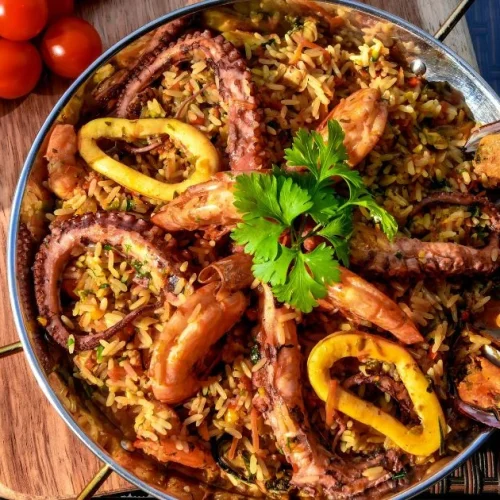
Delicious Paella
Ingredients
- 1.5 cups Bomba rice (or Calasparra)
- 4 cups chicken or seafood stock
- 1/2 tsp saffron threads, bloomed in warm water
- 2 tsp smoked paprika (pimentón)
- 2 cloves garlic, minced
- 1/2 onion, finely diced
- 1/2 lb chicken thighs, boneless, chopped
- 1/2 lb shrimp, peeled and deveined
- 1/2 cup peas
- 1 red bell pepper, sliced
- Olive oil
- Salt to taste
- Lemon wedges, for garnish
Instructions
- Sauté aromatics: In olive oil, cook onion, garlic, and smoked paprika until soft.
- Brown the chicken: Add and sear chicken until golden brown.
- Add vegetables: Stir in bell pepper and peas.
- Toast the rice: Add rice and sauté for 1–2 minutes.
- Add stock and saffron: Pour in warm stock and saffron liquid. Do not stir.
- Simmer: Cook uncovered for 15–18 minutes until liquid is absorbed.
- Add shrimp: Place shrimp on top during final 5 minutes.
- Create socarrat: Increase heat slightly in the last 2 minutes to form a crisp bottom.
- Rest and serve: Let it sit 5 minutes. Garnish with lemon wedges and serve hot.
Notes
Notes
- Use a paella pan or wide skillet to promote even cooking.
- Do not stir the rice after stock is added.
- Bloom saffron in warm water for maximum aroma and color.
- Optional: top with chopped parsley or drizzle of homemade allioli.
